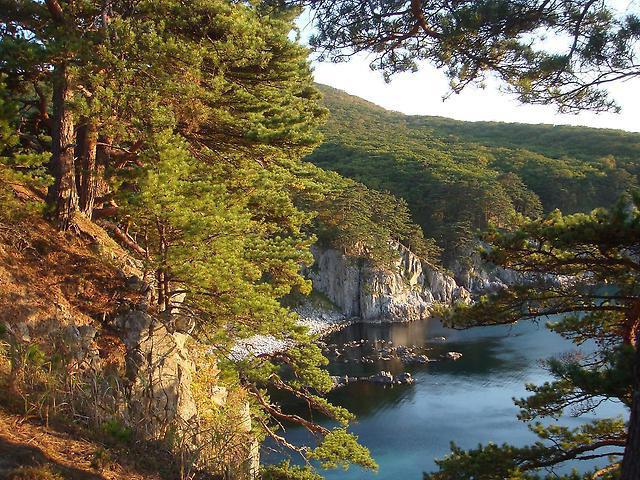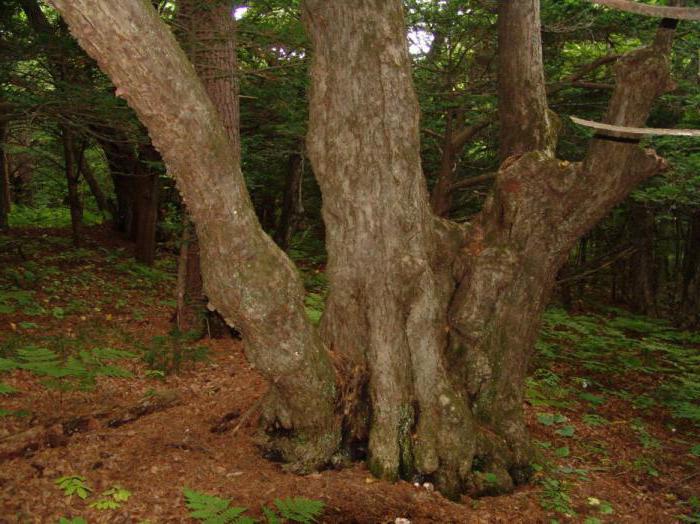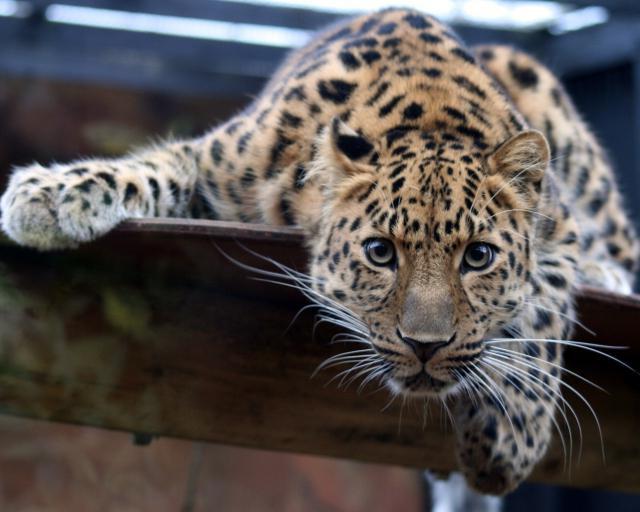In our article we want to talk about a wonderful and beautiful place. This is the Lazovsky State Nature Reserve named after Kaplanov, located in the Primorsky Territory.
History of creation
Lazovsky Nature Reserve is located in the south-east of Primorye in the Lazovsky District, it covers the Zapovedny ridge, which, in turn, is the southern spur of the Sikhote-Alin. It was created to study and preserve natural complexes coniferous and deciduous forests, as well as for the protection of valuable rare animals living in these parts, such as sika deer and goral.
The history of the Lazovsky Reserve begins in 1928, when the South Ussuri Nature Reserve was formed. In those days, it was guarded by two horse breeders, as well as six watchmen from the hunting community. In 1935, the reserve was transformed into the Sikhote-Alin Reserve, or rather, a branch. And only in 1940 did the Lazovsky Nature Reserve become an independent unit. However, at that time it was called the Suzukhinsky Reserve. It received its modern name only in 1970. It was renamed in honor of the director of the reserve, a very talented and famous scientist L. G. Kaplanov, who was killed in 1943 by poachers.
Reserve structure
Lazovsky State Nature Reserve currently has three forestries on its territory, which are equipped with the necessary material and technical base, fleet and a wide network of cordons. The staff of the scientific department is studying the dynamics of natural resources, as well as research on endangered species of animals. In addition, the reserve has an environmental education department, as well as an Ecocenter and a Museum of Nature. In the village of Lazo is the central manor of the protected area. In addition to land on the mainland, the reserve also owns two more and two islands - Beltsova and Petrova.
The importance of the reserve in nature conservation
I must say that the reserve was originally engaged in the study of unique in composition lianar cedar broad-leaved forests. By the variety of species that are listed in the Red Book, the Lazovsky Nature Reserve is one of the first places among the protected areas of Russia.
Unique is the relict yew grove that grows on the island of Petrov. And populations of the Amur tiger, goral and Ussuri deer are of particular value.
Description of territories
As for climate, the Lazovsky Nature Reserve is located in the temperate zone (this is the Pacific climatic zone). It is located on the southern slopes of Sikhote-Alin, between the rivers Kievka and Chernaya. Geographically, the Zapovedny ridge divides the territory into two component parts: southern (it is also seaside) and northern (continental). The height of the mountains is approximately 500-700 meters, some peaks reach up to 1200-1400 meters. The slopes have a completely different degree of steepness, while the ridges are very narrow but flat. A significant area is occupied by rocky placers. The height of the mountains decreases in the east when approaching the sea, the ridges are gradually replaced by ridges up to a thousand meters high.
Lazovsky State Nature Reserve in the south has two small islands, entirely covered with forests.
The climate of the protected area has a monsoon character.Whatever you say, the territory of the reserve is located on the border of the world's largest continent and the largest ocean, and therefore is constantly influenced by both giants. Of great importance is not even the geographical breadth of the location, but the fact that the protected area is located on the edge of a large mainland. As a result of this, the lands are very cold in winter and warm well in summer, which leads to a seasonal change in air flows that arise from the temperature difference between the ocean and the mainland.
Monsoons command the weather throughout the Primorsky Territory. In the winter, northwest winds prevail, and in summer the direction of the winds changes in the opposite direction.
As we have already mentioned, the Zapovedny ridge divides the lands protected by law into two parts. They differ from each other in their climatic features. On the coastal territories there is more rainfall, the winters are milder, but the summers are cooler.
In the continental part of the reserve is always a little colder.
Fauna of the reserve
Animals of the Lazovsky Reserve began to be studied back in the early thirties. Research was carried out by various institutions of the country, as well as foreign organizations. All these works formed the basis of the reserve’s first cadastre, published in 1995, and the second cadastre was also released in 2002. They summarized knowledge of the terrestrial vertebrates of the entire reserve.
On the conservation area inhabits:
- 18 species of fish.
- 8 species of amphibians.
- 2 species of lizards.
- 6 varieties of snakes.
The fauna of birds consists of 368 species, of which 141 species nest in this region. 49 varieties are listed in the Red Book of the Russian Federation, and 79 are listed in the Red Book of Primorye.
Specially protected birds include: mandarin duck, scaly merganser, white-tailed eagle. As for mammals, there are 60 species here. Many of them are rare and are under special protection: Amur goral, Amur tiger, sika deer. Five species are listed in the Red Book, 13 in the Book of Primorye.
Research on the local bird world began in 1943 and continues to this day, thanks to which the list of birds is constantly updated with new species.
Seaweed
Lazovsky Nature Reserve does not have large bodies of water on its territory. Research work was carried out in small rivers of the foothill and mountain type: Sokolovka, Kievka, Lazovka, Perekatnaya, Proselochnaya, Glazovka, Egerevka and Rusakovka. 775 species of algae were found, among them the largest number are diatoms and greens.
Mosses
The Lazovsky State Nature Reserve named after L. G. Kaplanov can be proud of the great abundance and variety of liver mosses that grow in cedar-deciduous forests. Most of them are located in the center of the protected area, as well as in the valley of large rivers. The predominant oak forests with undergrowths from woodpecker, hazel, and rhododendron are characterized by a smaller amount of species diversity. Of particular interest is the species composition on Petrov Island in a unique yew grove.
Vascular plants
Plants of the Lazovsky Reserve began to be studied in the mid-sixties of the 19th century by Budishchev. This process does not stop to this day. The vegetation here is very diverse, which was due to several factors, including the topography. Trees of the area comprise 50 species, and shrubs - 82, tree vines are represented by seven species. In addition, the Lazovsky Zapovednik named after L. G. Kaplanov is a kind of reserve for many endangered and rare plants. On its territory grows 31 varieties of vascular plants, which are included in the Red Book of the Russian Federation, as well as the book of Primorye.
The reserve contains valuable economic species:
- Medicinal - 569.
- Decorative - 353.
- Honey plants - 502.
- Feed - 182.
- Food - 111.
We can say that the Lazovsky State Reserve named after L. G. Kaplanov is a safe repository of the gene pool of the plant world.
The territory of the conservation zone itself is surrounded by villages, transport routes, agricultural land, which contributes to the entry of new varieties onto its lands. Now there are more than 150 new plant species recorded. Apparently, in the future, the increase in the species composition of vegetation will occur due to such alien plants, although the possibility of detecting previously unknown ones is not excluded.
The richness of flora determined the location of the reserve near the borders of several subareas: southern and central. An important factor is the features of the geological structure of the territories.
Local Attractions
Lazovsky Zapovednik (photos are given in the article) on its territory has two unique places: Petrov Island and Lake Zarya.
Petrov Island has an area of 32 hectares. Nowhere else on the continent is it possible to meet such virgin vegetation as here. Of greatest interest is the northwestern part of the island. On it is a yew grove. In addition, more than three hundred varieties of vascular plants grow here.
As for Lake Zarya, this is a small body of water, which in ancient times was separated from the sea. Its area is more than one hectare. A relic plant (aquatic) of Schreber brazii grows in it. This oldest species has been known since the Cretaceous period, the main habitat of its habitat is located in Central Asia. Also in the lake live three species of mollusks, which are listed in the Red Book of the Russian Federation.
Nature Tours
Excursion tours are currently open in the reserve. In addition, you can visit the Museum of Nature, which was created back in 1986, its territory is about two hundred square meters and has three expositions and 266 exhibits. It is located in the central office building in the village of Lazo. A visit to the museum is possible on any weekday from nine in the morning until five in the evening.
Tours are also held on the island of Petrov, where you can see the relict yew grove and the oldest buildings dating back to the 11-12th centuries.
In addition, those who wish in the reserve can follow the “tiger path” and see coastal cliffs, traces of animals such as bears, deer, tigers, and a badger city.
Security mode
The reserve is located in an area with a developed road network. In some places, highways run along the border of the reserve or its nature protection zone. In addition, many settlements are located in the immediate vicinity of the protected area. Residents of villages and summer cottages often break these boundaries by going into forests to collect mushrooms, berries and other forest gifts. However, much more damage is done by poachers who prey on ungulates. And recently, there has been a trend in which more and more people tend to get into closed areas in search of ginseng.
The summer cottages located near the borders of the reserve are also dangerous, since last year's grass is burned on them in the spring every year, and this, in turn, leads to forest fires.
